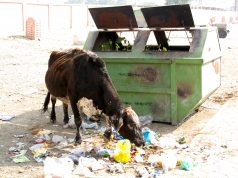Disposing stale food in the trash seems like the end of story, but it is only the beginning of so many problems.
Wasted food
A quarter of the food we produce as a country, ends up in a garbage site. This can be linked to humans purchasing more than they can consume, or not being able to finish what they thought they could wholly consume. When we throw away these leftovers in the dumpsites, animals rush to scavenge.
Scavenging in dumpsites
The norm of animals feeding in dumpsites is not something very new in our areas of residence, or work areas. Many are the times you find them scratching on the site, to unearth whatever edible they might find in the layer of rubbish.
Neglect of freedoms
Animals do not feed in areas trash because they like it, but it is because their freedoms which amount to their welfare have been neglected. Such include; Freedom from hunger and thirst, freedom from fear and distress, freedom from pain and injury, freedom from discomfort and freedom to express their natural behavior.
When you overlook any of the freedoms, hunger and thirst especially, they rush to look for alternatives elsewhere.
Dangerous Repercussions
When you let heaps of trash become part of an animal’s menu, it results to the following problems;
- Blockage of their digestive systems by materials such as plastics, rubber, tyres and metal
- Animal health risk
- Injury to the intestines by foreign materials when trying to digest.
Possible solution
The best solution is to ensure your animals have constant and enough supply of balanced feed and clean water, to avoid them roaming in the dumpsites, in search for the same.
Also ensure responsible ownership of your animals. This will restrict their movement around the neighboring towns and lower risks associated with unrestricted , irresponsible movements.




